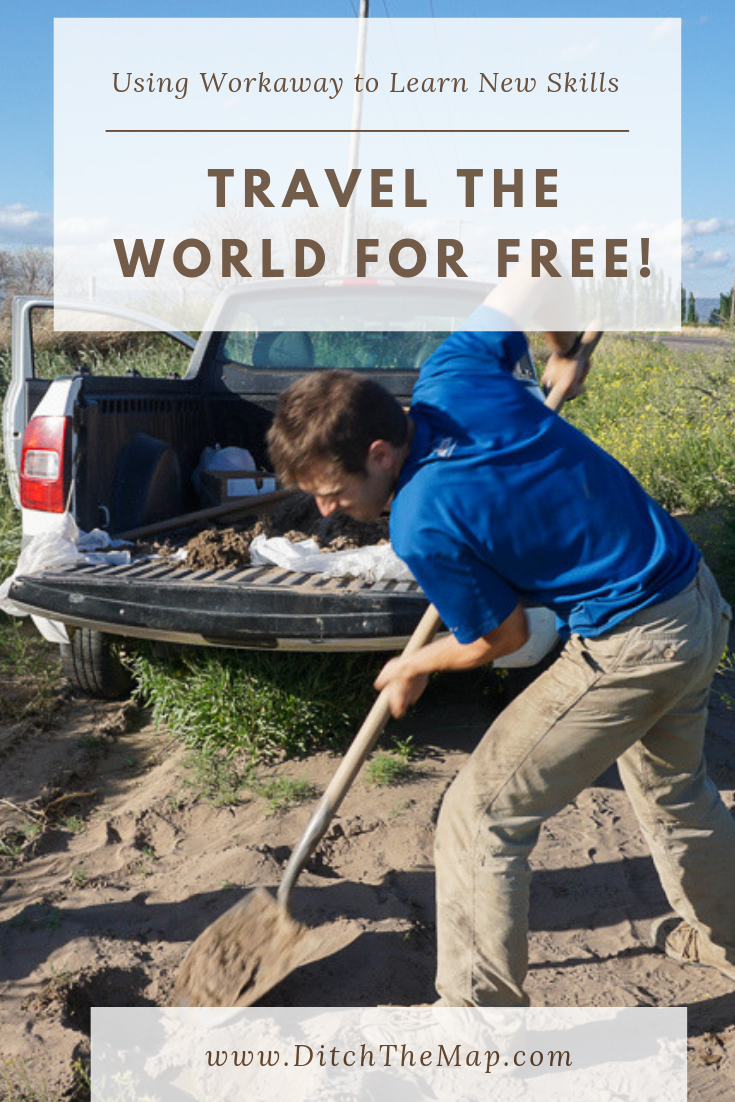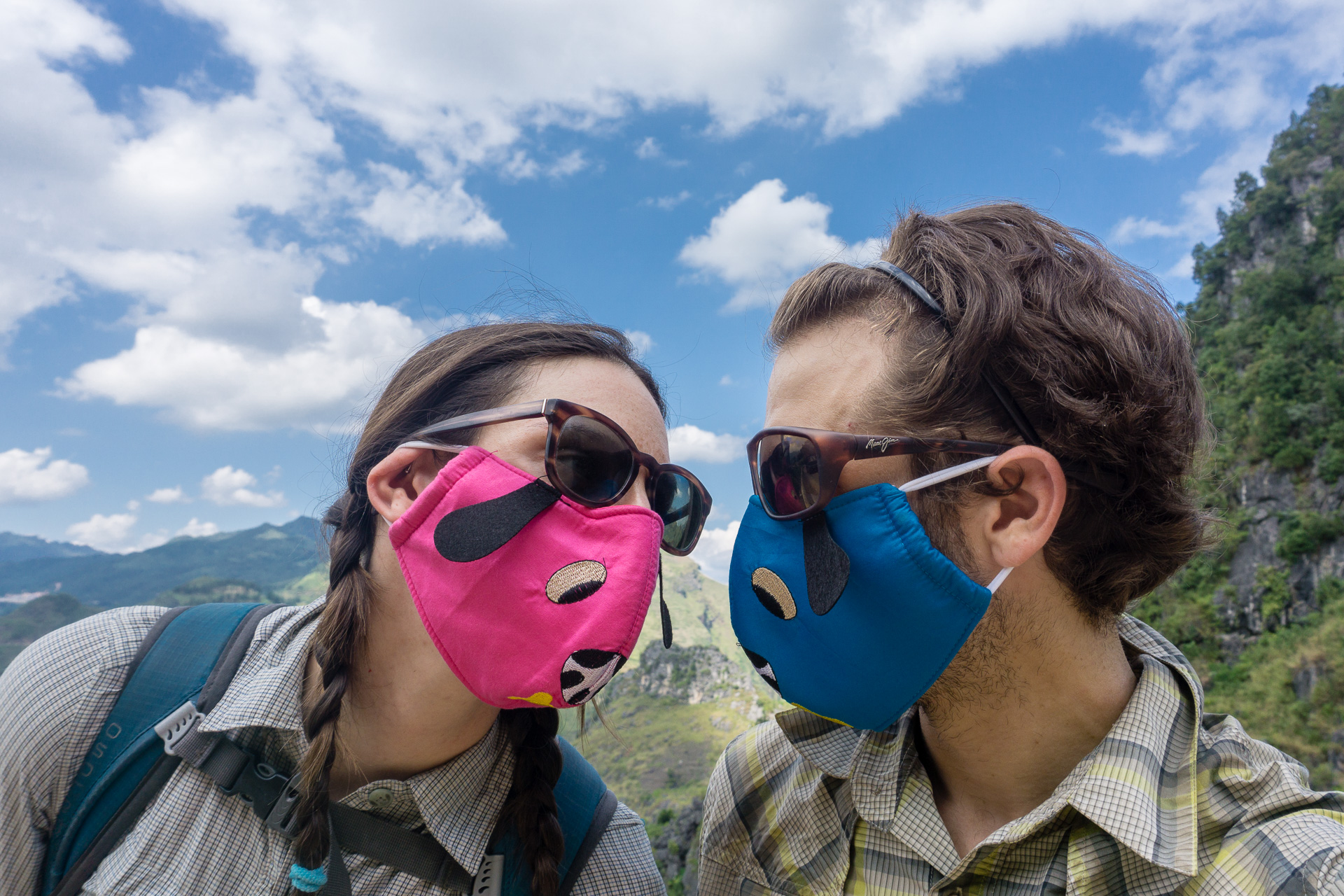1 Week Volunteering in Dhading District, Nepal
/Volunteering in Nepal
Through the website, workaway.info, we found an opportunity to build an orphanage with a family on a farm in a rural Nepali village. The family had their three-story home destroyed in the 2015 earthquake. They are now trying to repair the damage and move forward. With the help of volunteers over the past year they have made much progress, but a lot of work remains. Gagan is the oldest son of the family with whom we arranged the workaway. His parents, both teachers, live on the farm with their ten-year-old daughter, and several other kids who either lost their parents in the earthquake, or have parents that don’t have the means to take care of them. The family grows vegetables and also owns several goats, chickens, rabbits, and a dog and cat.
Getting to Our Nepali Workaway
After shipping our souvenirs home from the post office in Kathmandu, we took a taxi to the bus station. We asked at almost a dozen ticket offices for a ticket to Dhading District (less than 30km from Kathmandu) but we were given puzzled looks when we told them the bus stop where we needed to get off. We were approached by countless people at the bus station eager to help us (or get our business). Though they were very kind and tried to be helpful, we've noticed a particularly frustrating behavior here- when you ask a question, people wobble their head (making it very difficult to discriminate yes from no) and they offer any answer, even if they don't really know the answer! Hence we received a lot of misleading information and ended up on the wrong bus initially. Fortunately, after realizing our mistake a helpful fellow went above and beyond to help us, calling our workaway host to get more information about our destination. They spoke in Nepali, and unaware of what the heck was going on, we followed the helpful guy onto the bus in blind faith.
At the New Bus Station in Kathmandu, Nepal
At the New Bus Station in Kathmandu, Nepal
We stacked all our bags in one seat and squished between 3 other guys in the back row. The roads snaked along the mountainside barely holding onto the pavement (accidents are common place). After 90 minutes we had only moved 9 miles- traffic was terrible! We stopped at a local bus stop for what the driver declared a “tea break”. We drank some milk tea (chai masala) and on the way back to the bus Scott bought a slice of curry cucumber, roadside.
After another 15 minutes on the bus, we reached the correct bus stop! We were greeted on the dirt road by Gagan’s father. We paid the bus fare- 130rps (1.30 USD) and followed a dusty dirt road up to the tin and bamboo hut; our home for the next week. When we arrived at the house the children were playing outside and stopped to greet us. We were then introduced to the rest of the family. They gave us a warm welcome and showed us to our room. They were eager to make us comfortable and happy during our stay. We gave the kids the gifts we had brought for them- pencils, pens, stickers, and notebooks. They were very appreciative.
Kids Playing in the Yard at our Workaway in Nepal
Children at our Workaway in Nepal
Living in a Hut
During our visit Gagan showed us pictures of his home before the earthquake. The family had previously lived in a three story house, which was almost completed destroyed by the earthquake that also claimed the lives of several of their animals. From the debris, bamboo and tin, they have managed to build a new home more simple than their last. Sections of the house open up to outside and the floor is dirt.There are several lights scattered throughout the house, but they don’t light up the rooms too well. They also have a TV. The power gets cut several times a day for about an hour at a time due to 'load sharing.'
Inside our room that we slept in while volunteering at a local orphanage near Mahadevbesi in Dhading District, Nepal. (click to view)
Our bedroom consisted of a five and a half by eight foot area behind the kitchen, partially sectioned-off by tarps. Our bed was actually on top of the chicken coop (can't be particularly good for your health) Directly behind our room was the barn housing half a dozen goats. The other volunteers had arrived at the farm before us, scoring the more 'private bedrooms.' Our first night sleeping in the hut was difficult and neither of us slept much. It was hot, not well ventilated and noisy because of our proximity to the animals. Flies and bugs pestered us all night, so much so that the following day we hitched a ride into the nearest town to buy a mosquito net. Scott fixed up the mosquito net, giving us what he called, our "sanctuary."
Here is the place we volunteered at in Nepal (click to view a walkthrough)
Eating like a Nepali
We started each morning with a glass of tea around 7am, though we were up much earlier each day thanks to rooster repeatedly crowing just several feet away from our bed. The tea tasted like chai but with out the milk- just water (they can't refrigerate milk). Around 9:30am we were fed the traditional meal of Dal bhat for breakfast. Dal bhat is a Nepali staple consisting of white rice topped with a cooked, spiced lentil soup and curried vegetables (we always had potatoes on the side). The majority of Nepalese survive off of this meal only, eating it twice a day.
Eating Dal Bhat for Every Meal at our Workaway in Nepal
The mother and grandmother worked tirelessly each day to prepare the meals. Sitting on the floor with a knife between their feet they would peel and cut the potatoes. These two ladies took good care of us 9 volunteers at the farm. It was a lot of work to prepare so much food, do all of the dishes and keep the place clean.
Lunch usually took place between 1 and 3pm each day, and was usually a simple meal like chapati, rice crispies, or ramen type noodles. We would have tea again later in the afternoon and then dinner around 8pm- Dal bhat again. Though Dal bhat is quite tasty, after a few days we were day dreaming about fruit, vegetables, cold beer and chocolate. We made a few trips into town to satisfy these cravings and brought back a refreshing watermelon for everyone to enjoy. To eat our meals, the volunteers sat at the table and were always served first, usually by the children. The family would eat their meals after saying a prayer. They sat on the floor and ate the meals very skillfully with their hands. Though they try to keep the dining area clean, we were bombarded by flies each meal and had chickens and baby chicks stepping over our feet while sitting at the table. The chickens roamed freely in the house while the other animals had to walk through the house to get to their barn.
The Family Sits Down to Eat Dinner at our Workaway in Nepal
Eating Dinner during our Workaway in Nepal
We never ate any meat during our stay. Our only protein came from occasional chickpeas or lentils. Though this diet is a okay for a week, we read in the International New York Times, Nepali Edition that an alarming high number of Nepalese suffer from malnutrition. The article we read, was trying to educate the Nepali readers about how to achieve a balanced diet through a variety of food. It's very troubling to know that there is such a high prevalence of malnutrition in Nepal, which can have serious consequences like stunted growth. We did notice many small statured people here, though we can't possibly know if this is genetics or a result or malnutrition, which effects as many as 41% of children under 5.
Our Responsibilities
We had to be a bit self motivated and find a job to do while working on the farm. We thought we would be working to build an orphanage but the family didn’t have the materials, equipment or means available to do so just yet. In the future they have many plans to build additional rooms for children as well as a school on their property. The most urgent need for the village is consistent access to water for drinking and irrigating, a very expensive project that Gagan hopes to fund-raise for.
I Help Build Stairs all Over the Property at our Workaway in Nepal
The volunteers mostly worked to fixed up the property and the house. We decided to build stairs to make accessing the home easier. The house is built on the mountainside with steep dusty ramps leading around the property. During the rainy season, when the dust turns to mud, I imagine these ramps become quite slick and dangerous. During our stay however it hadn’t rained for ten months and dust coated everything, literally everything. We were breathing and eating dust for our entire stay. We used very basic tools to construct our stairs from stones, dirt and mud. Hopefully the strong winds don’t erode them away in the next few months- the wind is pretty relentless and whips the dry brittle dirt around. We worked mostly in the morning and afternoons, breaking in the middle of the day when the sun was most intense.
The other volunteers, Max and Christoph (from Canada and France) dug a 6 foot hole for drainage for the outhouse and Thor, Jo and Jonathon from Denmark cut down a tree to clear farm land and make firewood. Jeremy from the UK and Lily from Germany worked on applying more adobe to the outside of the house and constructing a shelter for the goofy little goats. These silly goats entertained us with their funny faces and noises and attempts to munch on our clothing. The family raises them to sell them for a profit- they buy goats for $85 and can sell them in one year for $200.
The 1 Toilet the 15 of Us Shared at our Workaway in Nepal
Our Experience
Our time at the farm provided insight into rural Nepali life. These Nepalese are some hard working individuals. Simple day to day tasks are made more difficult because of limited electricity and water. Many chores are quite physically demanding, like working on the farm or carrying a dozen plates and glasses to the barrel of water in the yard, but all of the family members, even the grandmother help with the jobs around the house. Even getting to the nearest town is a draining task, walking down the steep mountainside and catching a ride on the windy road with crazy drivers. But, the family does not complain and the children are always friendly, happy, bubbly and very well behaved.
We got to enjoy some time with the children drawing and coloring in the notebooks we bought for them. The kids made their own fun by playing a game similar to hopscotch in the dirt. They didn't require much to keep entertained or happy. One night Gagan played Nepali music videos on his laptop and it was fun to see the kids faces light up and enjoy some music. Despite the devastation of the earthquake, the family has been resilient and pushed forward. The father of the family was a sweetheart, and though at times his English was hard to understand, he was always checking on us to see if we needed anything, curiously asking us questions or demonstrating how to do a job around the house.
The Home We Lived at During our Workaway in Nepal
Our Closest Neighbor during our Workaway in Nepal
We really enjoyed spending time with the other volunteers. Over meals we exchanged travel stories and stories about the countries we call home. All of the volunteers were friendly and enthusiastic about travelling. And Jeremy from the UK (68 years old and living life to the fullest) always had some entertaining stories to tell us. We received some good advice about Asia. It is always so interesting to hear about others stories and reasons for travelling. The three boys from Denmark had graduated from high school a year or so ago and had worked before travelling. They said that they were not ready and not sure what they wanted to study in university yet so they were travelling instead, developing their sense of self first. How practical, to delay committing to a major and university when you are unsure of what you want. Why rush into something that may not be for you or you may regret? We should embrace this idea more in the states instead of looking down on those that choose a less traditional path.
Hitchhiking into Town During our Workaway in Nepal
Hitchhiking into Town During our Workaway in Nepal
One day to shower we hiked to a waterfall with the other volunteers, lead by Gagan. We trailed the side of the mountain to a small trickling waterfall and rinsed in the cold water. One of only two showers we took while at the farm. The other shower consisted of pouring water over ourselves with buckets filled from the barrel of water in the yard. The barrel of water was used for hand washing, dish washing and showering, while another, larger barrel of water was filled with fresher water from the mountain stream used for drinking water.
Another interesting realization we made was the different outlook on pets by different cultures. In the third world countries we have visited, the concept of a pet is very different from what we know. Animals are kept outside and used for protection only. They are not regarded as part of the family and they are not played with. The German Shepard that the family owned was chained to a post during the day, and moved to a different post in the shade to avoid the heat during the middle of the day. It was hard for us to see an animal treated like that. The dog ate our left overs every night but we could tell that it was almost always hungry. We longed to see the dog taken for a walk or enjoying a game of fetch- it's hard to remove ourselves from our idea of how a dog should be treated.
Original article published on April 4-9, 2016
Pin this article to read another time.






